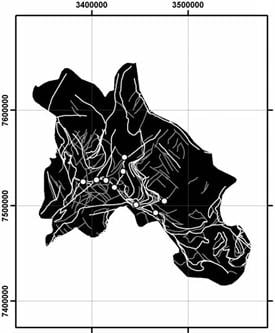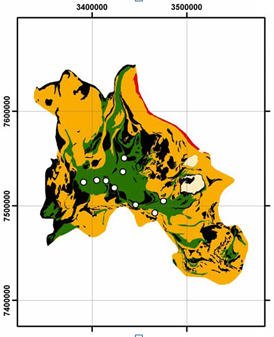Finland Orogenic Gold Potential
Finland Mineral Potential Mapping and GIS
In 2007, Greg attended an international spatial data modelling seminar in Rovaniemi, Finland. He presented several talks on the applications of spatial data modelling in the mineral exploration and environmental fields. Subsequent discussions with staff from the Finnish Geological Survey indicated Finland had significant potential for new discoveries as, in their view, many commodities remained highly unexplored. Additionally, Finland has excellent geological databases, good infrastructure and readily available exploration services. As a result of this sequence of events, Kenex compiled a GIS of available relevant historical exploration data over the Central Lapland Greenstone Belt late in 2008. We used this GIS to undertake mineral potential mapping that identified targets for orogenic gold exploration.
Orogenic gold is the most common style of gold mineralisation in Finland, with ~140 known occurrences. It has been described in all tectonic districts in both Archean and Proterozoic domains, but is particularly well known in greenstone belts in Central Lapland.
This region is dominated by Archean and Palaeoproterozoic metamorphosed mafic to ultramafic volcanics with lesser volumes of coeval metasedimentary rocks and slightly younger felsic to intermediate intrusives. It is structurally complex with numerous crustal scale reverse, normal, and detachment faults, often intersecting each other.

Faulting in the area. Training data as white circles.

Metamorphic lithologies. Training data as white circles.
The Central Lapland Greenstone Belt is one the richest gold-producing regions in Finland. While it contains numerous orogenic gold, iron-oxide copper gold, and palaeoplacer gold deposits, there is also a number of deposits with an atypical metal association including significant copper, cobalt, nickel, and/or uranium. These elements are typically present in minor to sub-economic concentrations, although copper has been extracted from Saattopora and Sirkka.
It has been suggested this unusual metal association is the result of orogenic evolution in an area where pre-existing intracratonic basins, containing extensive evaporite sequences, have produced anomalously saline ore fluids, and in turn, transport of base metals. Kenex’s final Finland mineral potential map was used to assess mineral exploration tenders provided by the Finnish Ministry of Trade and Industry, and has provided a valuable mineral exploration tool for clients looking for prospective areas not yet covered by mineral exploration tenements.

Mineral potential model by staff from Finland’s Geological Survey for IOCG mineralisation.
